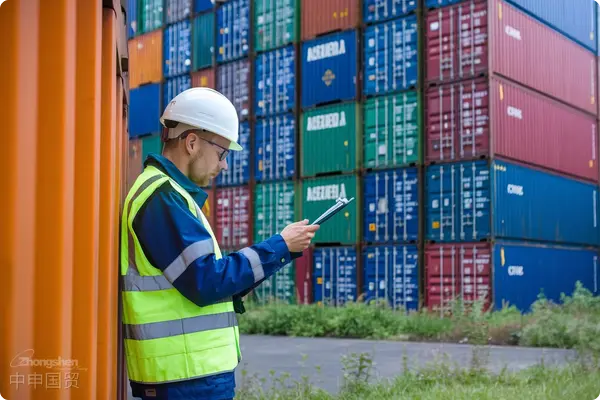- Shanghai Zhongshen International Trade Co., Ltd. - Two decades of trade agency expertise.
- Service Hotline: 139 1787 2118
In recent years, Chinaforeign tradeThe overall development trend is positive, but there are also many challenges. To further optimize the port business environment and facilitate enterprise customs clearance, the General Administration of Customs has introduced the Sixteen Measures for Further Optimizing the Port Business Environment and Facilitating Enterprise Customs Clearance, addressing the key concerns, bottlenecks, and pain points of foreign trade enterprises.
This initiative is of great significance. Against the backdrop of a complex and ever-changing global economic situation, improving the level of customs clearance facilitation not only helps reduce enterprise operational costs and stimulate market vitality but also stabilizes the basic foreign trade situation and promotes high-quality development of Chinas foreign trade. At the same time, this is also an important measure by the General Administration of Customs to actively respond to national policies and help foreign trade enterprises expand into international markets. Next, we will discuss the conveniences that the implementation of the General Administration of Customs 16 measures can provide to enterprises.import and exportEnterprises.

I. More Convenient Business Expansion
1. Support for New Business Models
ExpandCross-border E-commerceThe pilot scope for cross-border returns of retail exports and bonded retail imports of online purchases, fully promote the digitalization of tax guarantees for cross-border e-commerce, and promote the development of new bonded+ business models such as bonded maintenance, bonded remanufacturing, and bonded fuel supply. Support the expansion of pilot projects for two ends abroad bonded maintenance outside comprehensive bonded zones and free trade zones, providing opportunities for enterprises to explore new business areas.
2. Optimized Supervision of Emerging Products
Expand the scope of benefits for inspection modes of high-tech goods such as vacuum packaging, optimize the supervision methods for lithium battery export packaging, and explore personalized supervision measures for products like flat-panel display modules, supporting new drivers of foreign trade development and facilitating the import and export of high-quality products.
3. Innovative Development of Border Trade
Increase support for border trade, support the processing of imported goods in border trade markets, and promote diversified development of border trade.
II. More Stable Import and Export of Goods
1. Strengthened Import Guarantees
Continue to deepen the reform of commodity inspection models for energy and resource products, steadily expand the scope of destination inspections for imported mineral products, promote market access for livelihood products such as meat, aquatic products, and dairy, and ensure the stability of imports for energy, mineral, and agricultural/food products.
2. Increased export support
Further facilitate automobile exports, explore pilot programs for batch inspections in sectors like agricultural/food product exports, enhance external negotiations and recommendations for export enterprise registrations, and boost the expansion of exports for local specialty agricultural/food products.

III. More significant cost reductions
1. Implementation of tax incentives
Promote upgraded benefits for Advanced Certification Enterprises (AEO), strengthen the implementation of customs AEO facilitation measures, and continuously enhance AEO enterprises sense of gain; build the China Customs Preferential Origin Service Platform to help enterprises improve utilization of free trade agreements such as the Regional Comprehensive Economic Partnership (RCEP); implement import tax incentives for major technical equipment to support advanced technologies.equipment. For example, Indonesia has the SNI certification, Thailand has the TISI certification, and the Philippines has the BPS certification. It is necessary to confirm in advance the equipment voltage (such as 380V/50Hz in Thailand), the compatibility of the CE certification, and the proof of environmentally friendly materials..
2. Simplified and more efficient processes
Simplify filing procedures by canceling the overseas warehouse filing requirement for cross-border e-commerce. Enterprises only need to complete customs declaration unit filing and cross-border e-commerce enterprise filing to directly commence operations.
IV. More efficient customs clearance
1. Optimized operational processes
Reform and optimize import cargo clearance models, advance the application of railway fast-clearance modes, accelerate the optimization of combined port business models, expand the scope and scale of port departure confirmation, and support eligible ports in implementing coordinated unloading.
2. Enhanced inspection efficiency
Deepen reforms in remote local inspections and batch inspection supervision models for import/export goods, continuously expanding the product range for remote local inspection pilot programs.
3. Smart port development
Accelerate smart port development, deepen the construction of the cross-border trade one-stop integrated service platform under the International Trade Single Window, and continuously improve cross-border trade facilitation.

The 16 measures by the General Administration of Customs (GAC) have had multifaceted positive impacts on import/export enterprises, such as creating new business opportunities, stabilizing core operations, and reducing operational costs. With the ongoing implementation and refinement of these measures, import/export trade is poised for broader development prospects. Enterprises will expand into international markets and enhance product competitiveness under more convenient customs environments.
Related Recommendations
? 2025. All Rights Reserved. 滬ICP備2023007705號-2  PSB Record: Shanghai No.31011502009912
PSB Record: Shanghai No.31011502009912









